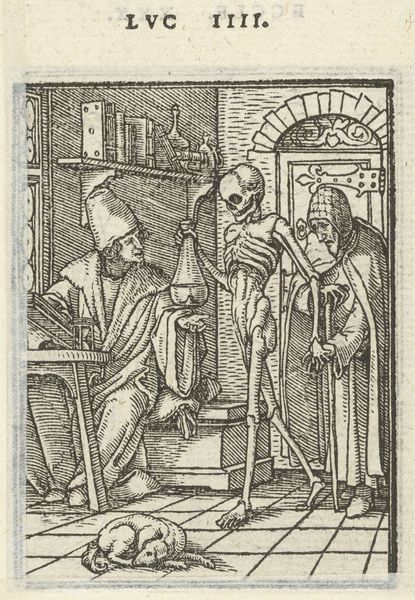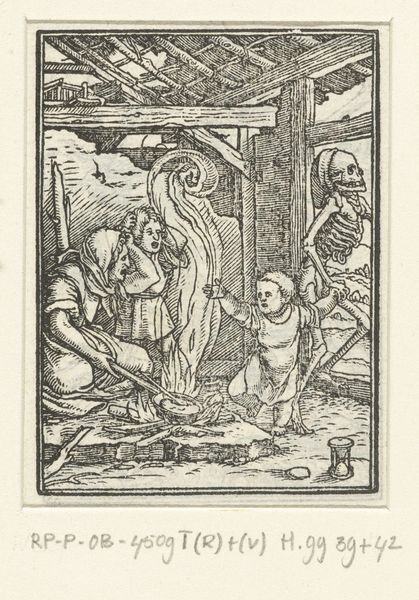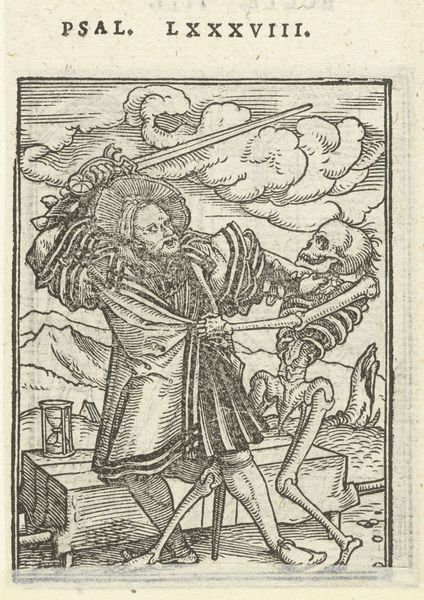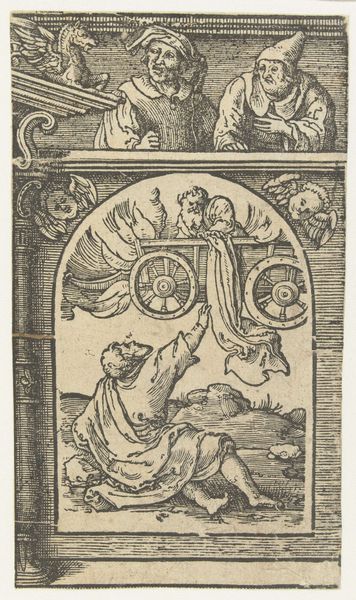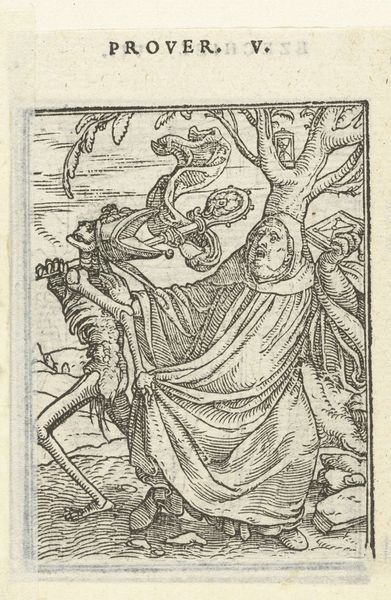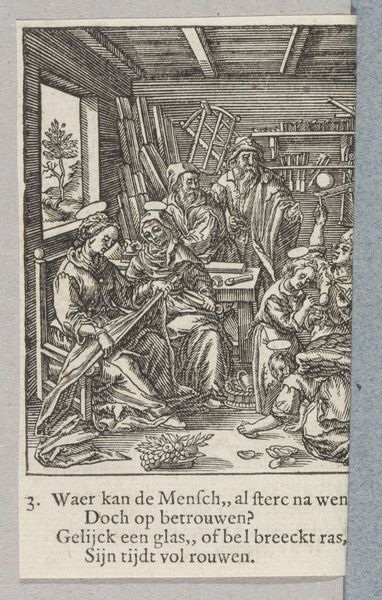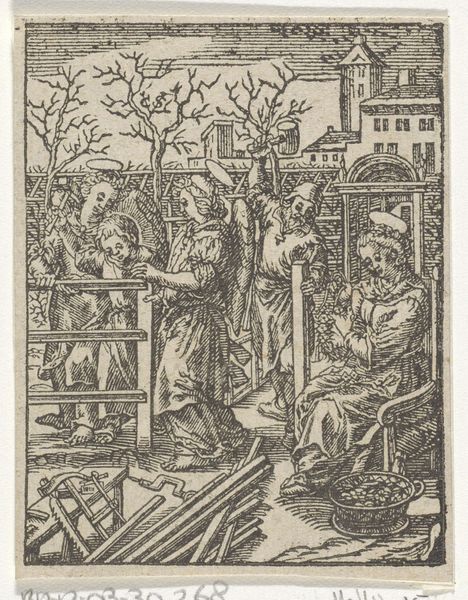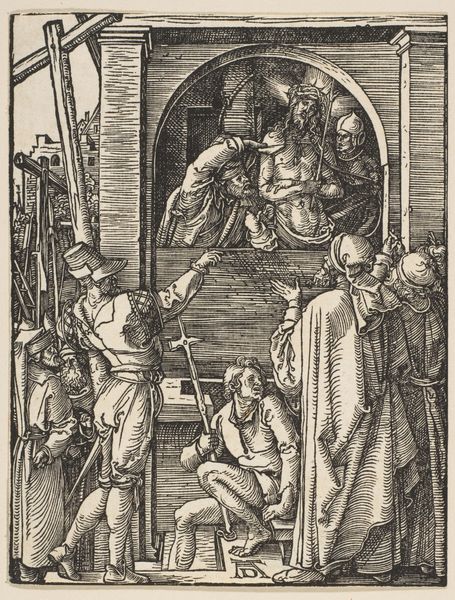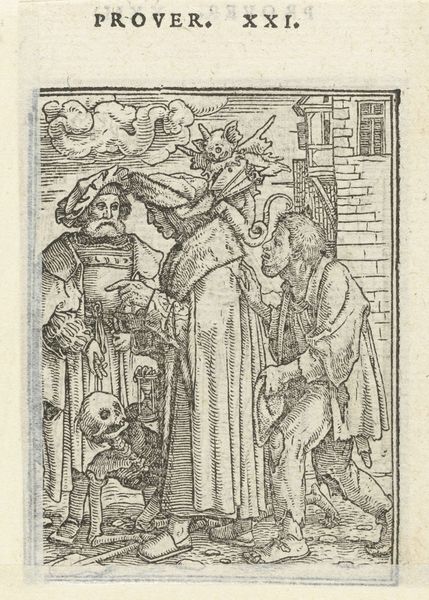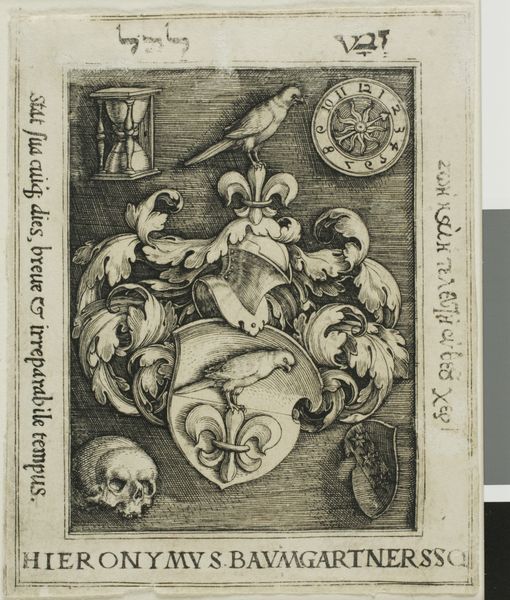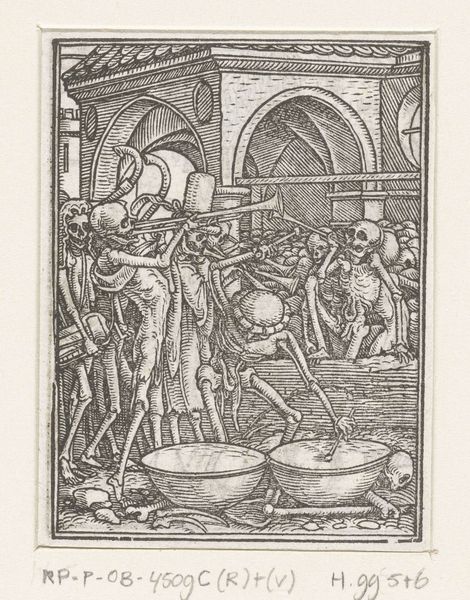
drawing, print, ink, woodcut
#
portrait
#
drawing
#
medieval
#
allegory
#
pen drawing
# print
#
pen illustration
#
ink line art
#
ink
#
momento-mori
#
pen-ink sketch
#
woodcut
#
history-painting
Dimensions: height 65 mm, width 50 mm
Copyright: Rijks Museum: Open Domain
Curator: Here we have "Astronomer and Death" by Hans Holbein the Younger, created sometime between 1524 and 1538. This ink drawing, a print actually, is currently housed in the Rijksmuseum. Editor: My first impression? Grim! The stark black lines really amplify the themes of mortality. It's a claustrophobic composition. Curator: Precisely! Holbein masterfully uses line and form to convey a sense of impending doom. Note the density of lines used to create a flattening effect. Holbein diminishes space. Editor: Definitely! And look at the astronomer's upward gaze, contrasted with the looming presence of Death. The image is riddled with what seems to be, quite literally, a skull staring at another skull! How much loaded imagery can be piled up into one drawing?! Curator: Indeed, Holbein often incorporated symbols into his work. In this print, we observe an allegorical depiction of vanitas. Consider the scientific instruments, such as the armillary sphere above and books on the table; all rendered futile in the face of Death, rendered as a skeleton who snuffs life from the astronomer, who appears ignorant of his fate, pointing to heavens. It reinforces this theme by presenting the futility of knowledge when confronted by death. Editor: Absolutely. The hourglass that is nestled in the Death’s bony arms is so cliché, and so spot on, as it visually drives the limited nature of the mortal human lifespan. The whole thing plays as a ‘momento mori’. It asks viewers to ponder their own mortality and the brevity of life. What gets me is that creepy fellow observing the scene from the back! Curator: A fine point. This scene certainly reminds one that no one is truly free from Death. From a compositional point of view, Death is visually centered, his bony arms resting on the table, becoming part of it, central to the artwork and by consequence inescapable. The diagonal lines, one made by the Death's gesture of suffocating the astronomer, is masterfully contrasted with the other one pointing upwards. Editor: Looking at it, it does invite us to question what truly matters. Thank you. This deathly juxtaposition gives so much to ponder, so succinctly. Curator: Agreed, its strength lies in its concise yet potent articulation of our mortality.
Comments
No comments
Be the first to comment and join the conversation on the ultimate creative platform.
